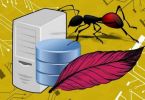Ensemble Machine Learning In Python: Random Forest, AdaBoost
What you’ll learn
Understand and derive the bias-variance decomposition
Understand the bootstrap method and its application to bagging
Understand why bagging improves classification and regression performance
Understand and implement Random Forest
Understand and implement AdaBoost
Requirements
Calculus (derivatives)
Numpy, Matplotlib, Sci-Kit Learn
K-Nearest Neighbors, Decision Trees
Probability and Statistics (undergraduate level)
Linear Regression, Logistic Regresion
Description
In recent years, we’ve seen a resurgence in AI, or artificial intelligence, and machine learning.
Machine learning has led to some amazing results, like being able to analyze medical images and predict diseases on-par with human experts.
Google’s AlphaGo program was able to beat a world champion in the strategy game go using deep reinforcement learning.
Machine learning is even being used to program self-driving cars, which is going to change the automotive industry forever. Imagine a world with drastically reduced car accidents, simply by removing the element of human error.
Google famously announced that they are now “machine learning first”, and companies like NVIDIA and Amazon have followed suit, and this is what’s going to drive innovation in the coming years.
Machine learning is embedded in all sorts of different products, and it’s used in many industries, like finance, online advertising, medicine, and robotics.
It is a widely applicable tool that will benefit you no matter what industry you’re in, and it will also open up a ton of career opportunities once you get good.
Read More:- Learn HTML5 and CSS3. Build your modern website Course
Machine learning also raises some philosophical questions. Are we building a machine that can think? What does it mean to be conscious? Will computers one day take over the world?
This course is all about ensemble methods.
We’ve already learned some classic machine learning models like a k-nearest neighbor and decision tree. We’ve studied their limitations and drawbacks.
But what if we could combine these models to eliminate those limitations and produce a much more powerful classifier or regressor?
In this course, you’ll study ways to combine models like decision trees and logistic regression to build models that can reach much higher accuracies than the base models they are made of.
In particular, we will study the Random Forest and AdaBoost algorithms in detail.
To motivate our discussion, we will learn about an important topic in statistical learning, the bias-variance trade-off. We will then study the bootstrap technique and bagging as methods for reducing both bias and variance simultaneously.
We’ll do plenty of experiments and use these algorithms on real datasets so you can see first-hand how powerful they are.
Since deep learning is so popular these days, we will study some interesting commonalities between random forests, AdaBoost, and deep learning neural networks.
All the materials for this course are FREE. You can download and install Python, Numpy, and Scipy with simple commands on Windows, Linux, or Mac.
This course focuses on “how to build and understand“, not just “how to use”. Anyone can learn to use an API in 15 minutes after reading some documentation. It’s not about “remembering facts”, it’s about “seeing for yourself” via experimentation. It will teach you how to visualize what’s happening in the model internally. If you want more than just a superficial look at machine learning models, this course is for you.
Suggested Prerequisites:
Calculus (derivatives)
Probability
Object-oriented programming
Python coding: if/else, loops, lists, dicts, sets
Numpy coding: matrix and vector operations
Simple machine learning models like linear regression and decision trees
TIPS (for getting through the course):
Watch it at 2x.
Take handwritten notes. This will drastically increase your ability to retain the information.
Write down the equations. If you don’t, I guarantee it will just look like gibberish.
Ask lots of questions on the discussion board. The more the better!
Realize that most exercises will take you days or weeks to complete.
Write code yourself, don’t just sit there and look at my code.
WHAT ORDER SHOULD I TAKE YOUR COURSES IN?:
Check out the lecture “What order should I take your courses in?” (available in the Appendix of any of my courses, including the free Numpy course)
Who this course is for:
Understand the types of models that win machine learning contests (Netflix prize, Kaggle)
Students studying machine learning
Professionals who want to apply data science and machine learning to their work
Entrepreneurs who want to apply data science and machine learning to optimize their business
Students in computer science who want to learn more about data science and machine learning
Those who know some basic machine learning models but want to know how today’s most powerful models (Random Forest, AdaBoost, and other ensemble methods) are built
Created by Lazy Programmer Inc.
Last updated 12/2019
English
English [Auto-generated]






